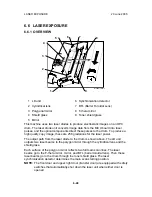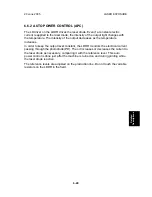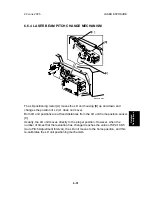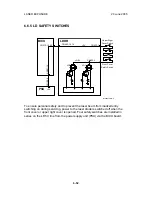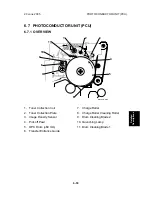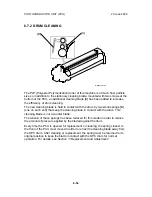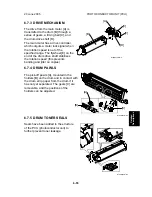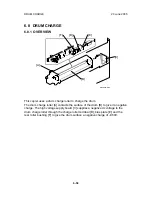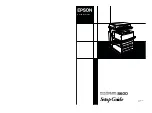
DEVELOPMENT
20 June 2005
6-62
6.9.4 DEVELOPMENT BIAS
Mechanism
Black areas of the latent image are at a
low negative charge (about –150 V) and
white areas are at a high negative charge
(about –850 V).
To attract negatively charged toner to the
black areas of the latent image on the
drum, the high voltage supply board [A]
applies a bias of –560 volts to the
development roller throughout the image
development process. The bias is applied
to the development roller shaft [B]
through the bias terminal spring [C] and
bias terminal [D].
The development bias voltage (-560 V) can be adjusted with SP2-201
(Development Bias).
Correction for paper width and thickness (by-pass tray only)
The by-pass tray can be used for non-standard paper narrow than sizes accepted
by the paper trays. Thicker paper, OHP sheets, etc. can also be loaded in the by-
pass tray but adjustments must be performed with the SP modes listed below in
order to avoid jams and misfeeds.
SP Mode
SP Name
SP2201 1
Development Bias
Width 216 - 297 mm (Default: -560V)
SP2309 1
Paper Lower Width [a]
Width limit (Default: 150 mm)
SP2309 2
Paper Upper Width [b]
Width limit (Default: 216 mm)
SP2914 3
Process Control Setting (B
γ
)
Adjust 10V/step (Default: 200V)
SP2914 4
Process Control Setting (B
δ
)
Adjust 10V/step (Default: 50V)
The way that these SP modes are used is shown below.
For example, with the default settings, if the paper width fed from the by-pass tray
is 200 mm, the development bias voltage will be –560 + 50 V.
B195D942.WMF
0 mm
SP 2309 1
Default: 150 mm
SP 2309 2
Default: 216 mm
297 mm
Voltage:
SP2201 1 + SP2914 3
Default: -560 + 200 V
Voltage:
SP2201 1 + SP2914 4
Default: -560 + 50 V
Voltage:
SP2201 1
Default: -560 V
B195D915.WMF
[A]
[B]
[C]
[D]

